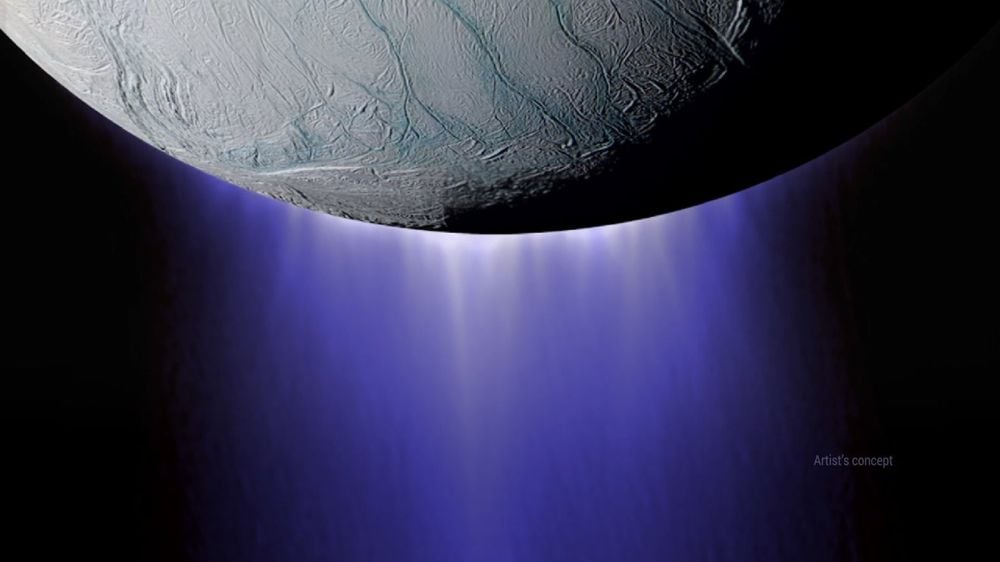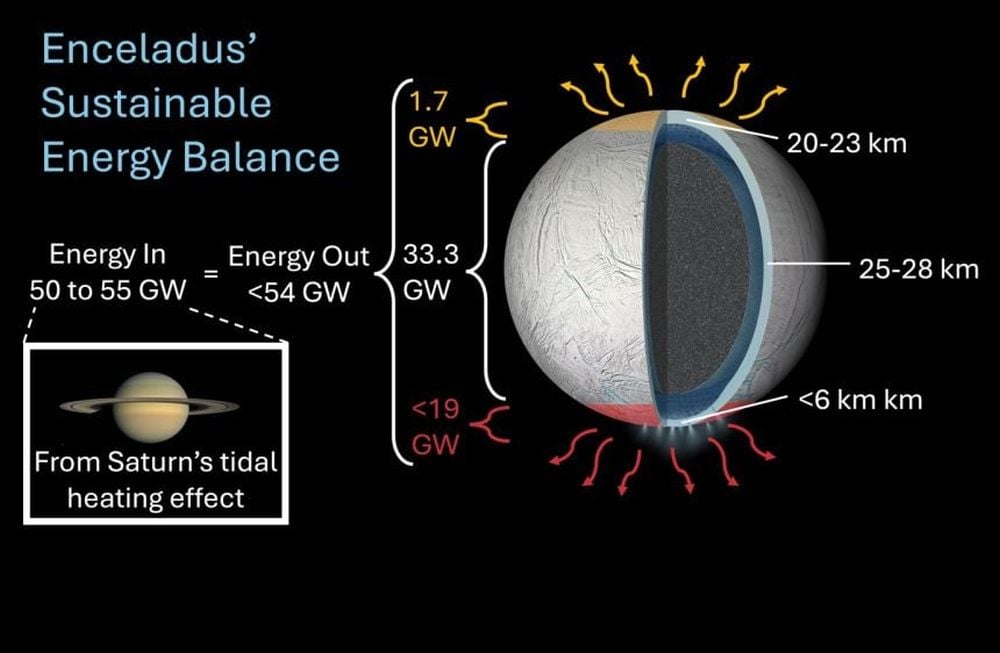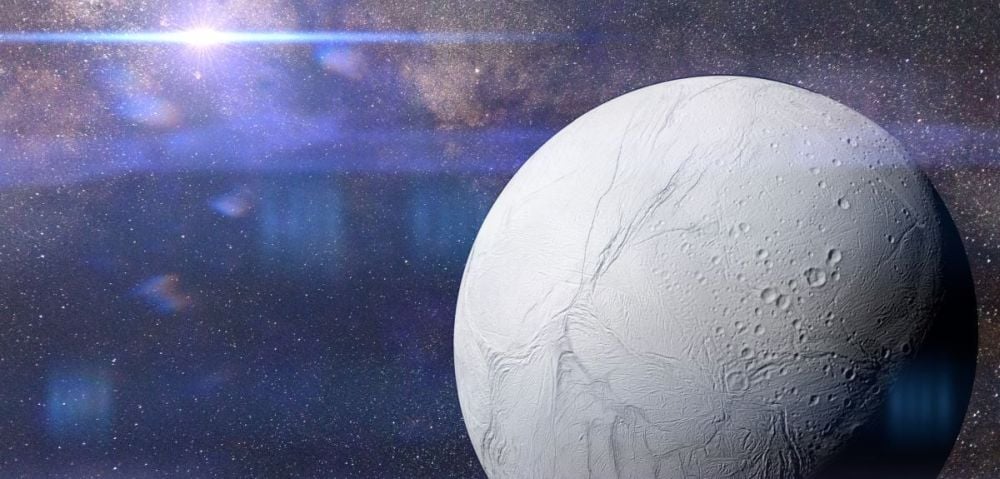The case for habitability in Enceladus’ warm, ice-capped ocean is growing. Ever since Cassini found evidence of hydrothermal activity in the moon’s ocean, and detected life’s building blocks in the plumes of material ejected from the ocean, scientists have worked to put this data into context.
One of the most important factors in habitability is time. The conditions that support habitability need to persist, like they have on Earth for billions of years. One of those factors is a world’s heat budget. A planet, or moon in this case, needs to moderate its temperature and maintain a balance in its heat flow. Too much cooling or too much heating can both damage the prospects for long-term habitability.
The Cassini mission was in the Saturnian system for about 13 years. During that time, it performed many flybys of Enceladus. The mission found plumes of water ice and vapour erupting from deep cracks in the ice covering the moon’s south pole. Scientists used the data from these flybys to measure the amount of heat coming from the south pole.
 *This artist’s illustration highlights the plumes coming from Enceladus’ south pole region. The features unofficially called ‘tiger stripes’, parallel linear depressions in the moon’s icy surface, are also visible. Image Credit: NASA/JPL-Caltech*
*This artist’s illustration highlights the plumes coming from Enceladus’ south pole region. The features unofficially called ‘tiger stripes’, parallel linear depressions in the moon’s icy surface, are also visible. Image Credit: NASA/JPL-Caltech*
However, there was no evidence of heat escaping from the moon’s north pole, and without that evidence, scientists naturally assumed that the region was geologically inactive.
New research is reconsidering that. It’s titled “Endogenic heat at Enceladus’ north pole,” and it’s published in Science Advances. The lead author is Dr. Georgina Miles from the Southwest Research Institute.
“The long-term survival of Enceladus’ ocean depends on the balance between heat production and heat loss,” the researchers write. “To date, the only place where a direct measurement of Enceladus’s heat loss has been made is at the south pole. Here, we show that the north pole also emits heat at a greater rate than can be explained by purely passive models.”
Cassini was able to observe Enceladus’ north pole in the winter in 2005 and in the summer in 2015 with its Cassini Composite InfraRed Spectrometer (CIRS) instrument. By working with that data, the researchers determined that the north pole’s surface was about 7 degrees Kelvin warmer than thought. That’s more than passive models of Enceladus’ heat flux predict, and is a strong indication that the north pole is also leaking heat.
With heat measurements from both of the moon’s poles, Miles and her co-researchers could then constrain Enceladus’ overall heat budget.
 After measuring heat flow at Enceladus’ north pole, the researchers were able to combine those measurements with the same measurements from the south pole. This let them constrain Enceladus’ global conductive heat flow. This is the first observational constraint of Enceladus’ energy loss budget (<54 GW). This measurement is consistent with measurements of the moon’s energy input (50 to 55 GW) from tidal heating. That means that Enceladus’ heat flow is sustainable in the long term, which is a key factor for the evolution of life. Image credit: University of Oxford/NASA/JPL-CalTech/Space Science Institute (PIA19656 and PIA11141)
After measuring heat flow at Enceladus’ north pole, the researchers were able to combine those measurements with the same measurements from the south pole. This let them constrain Enceladus’ global conductive heat flow. This is the first observational constraint of Enceladus’ energy loss budget (<54 GW). This measurement is consistent with measurements of the moon’s energy input (50 to 55 GW) from tidal heating. That means that Enceladus’ heat flow is sustainable in the long term, which is a key factor for the evolution of life. Image credit: University of Oxford/NASA/JPL-CalTech/Space Science Institute (PIA19656 and PIA11141)
“The energy budget of Enceladus is an important quantity to evaluate because its tidal heat, generated from its interaction with Saturn via the orbital resonance with Dione, is linked to Enceladus’ age, ice shell thickness, and thus, the lifetime of its ocean,” the researchers explain. “The similarity of the estimated heating and heat loss rates suggests the ocean in its current epoch is long-lived, making it far more likely to be an environment hospitable to the development of life.”
The research also showed that thermal data like this is useful in measuring the thickness of the ice on frozen moons. This is important for any future missions to Enceladus, or to any other frozen ocean moons in the Solar System. “Assuming a conductive ice shell, our estimated heat flux in the north polar region implies an ice shell thickness of 20 to 23 km (global mean of 25 to 28 km), which falls within the range of values estimated by several previous ice shell structure models,” the researchers write.
Enceladus is a prime target in the search for life in our Solar System. The bulk of evidence shows that microbial life is possible there, and this research bolsters that conclusion. Still, the only real way to know for sure is to send a spacecraft there.
“Eking out the subtle surface temperature variations caused by Enceladus’ conductive heat flow from its daily and seasonal temperature changes was a challenge, and was only made possible by Cassini’s extended missions,” lead author Miles said in a press release. “Our study highlights the need for long-term missions to ocean worlds that may harbour life, and the fact the data might not reveal all its secrets until decades after it has been obtained.”
Unfortunately, Saturn is a long way away. While the ESA’s JUICE and NASA’s Europa Clipper are on their way to investigate Europa, another frozen moon with a warm subsurface ocean, missions to Enceladus remain in the conceptual stage at this point. The future is always uncertain, but hopefully, one day, a mission will make it to this fascinating frozen moon and determine if its actually habitable.

